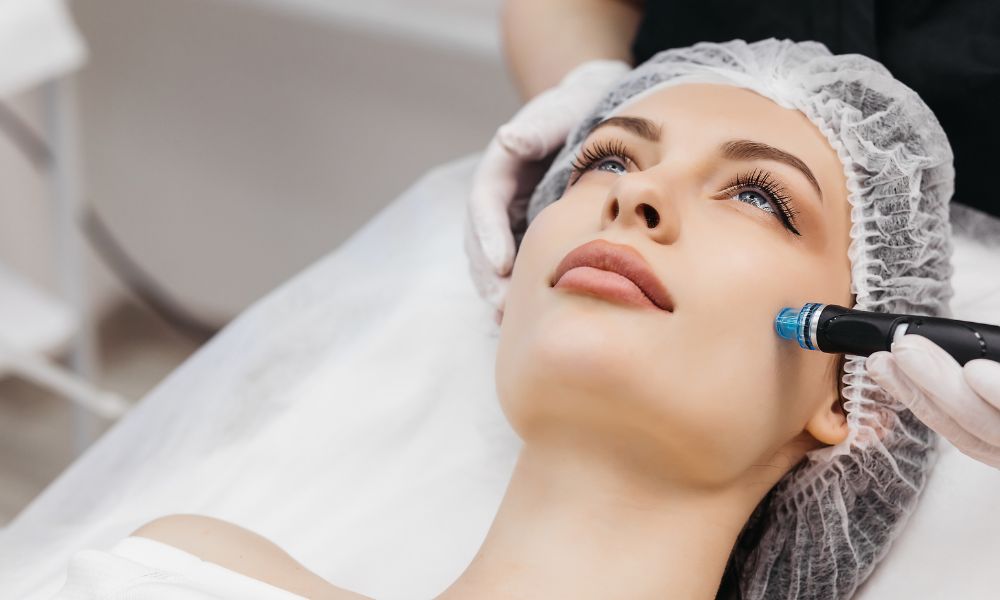In appearance medicine, little has emerged to tackle the crown Botox, or similar botulinum toxin treatments, hold in popularity for helping minimise the lines and wrinkles that naturally form with age.
But with buzz afoot around a new treatment said to hold potential in age defying skin rejuvenation gaining coverage overseas, it’s fair to say we’re curious.
Exosomes and exosome therapy is dermatology’s newest hot topic, with an arresting premise – active ingredients culled from youthful tissues, used to transform your own. Exosomes are nanoparticles naturally released by cells in the human body.
For appearance, the idea is that isolated from a donor and applied topically or injected, exosomes might send signals to unhealthy cells, triggering them to regenerate, helping skin to behave like younger skin on a deep cellular level.
It’s gobsmacking stuff. Appearance and aesthetic experts say the potential is promising, but caution further research and long-term studies on the use of exosomes, including safety and efficacy, is crucial. Given the source of many exosomes in use – human stem cells – questions around ethics and parameters around how they are harvested for commercial aesthetic use may prove a barrier for many otherwise interested in fighting off the signs of ageing.
Proceeding with caution
They are available in some markets overseas by being included in skincare or applied during microneedling, yet exosome products and treatments are still considered experimental.
They are not widely available (or legal in many cases) with some limitations on their use and statements about what they can achieve. Not yet cleared or validated by the FDA in the US, it has cracked down on stem cell and exosome therapies being promoted. Some companies have been reprimanded by the FDA for promoting results that have not yet been substantiated by research.
The new NZ government has declared it will repeal the Therapeutic Products Act 2023, which currently leaves the precise status of exosomes to be determined.
However, given increasing discussion and attention globally, particularly emerging from South Korea, a hotbed of aesthetic development, it’s an area we’re likely to hear more about this year and beyond.
How exosomes work
Unlike other skincare ingredients that are derived from plants and nature or created in a lab, exosomes are most often taken directly from human or animal cells. Similar plant-sourced extracts, referred to in research as ‘plant-derived exosome-like nanoparticles’, are also being developed.
“Exosomes are super-tiny nano-sized vesicles (like micro packets) that are released by cells and contain a variety of proteins, lipids and genetic material such as mRNA and miRNA,” explains Dr Catherine Stone, who has owned and operated her The Face Place cosmedicine clinic for over 20 years.
“They essentially function as messengers between and within cells, and work by regulating gene expression, changing the micro-environment in the cells they are applied to, and inducing cell differentiation with the clinical intention of improving cell health.”
The appearance medicine expert, who spends much of her time staying abreast of industry developments and also works as a trainer for Allergan, makers of Botox and Juvéderm filler, says one drawcard of exosome use is that they are thought to not be easily recognised by the immune system, reducing the chance of rejection.
There are a significant number of uses being investigated in the medical field as well as in possibilities for treating skin.
Exosomes have been explored in regenerative medicine (in one study to repair cartilage around joints) as well as potential treatments for neurological, cardiovascular and degenerative disorders … and even the potential of early diagnosis of cancer through saliva, blood or plasma.
“Cosmetically, exosomes are being touted as a way to reduce wrinkles, improve pigmentation, stimulate collagen and elastin to enhance skin texture and elasticity, and to reduce the inflammation and damage caused by UV-B in the sun’s rays,” says Dr Stone.

Where do they come from?
Dr Stone says exosomes are naturally produced in the body by a wide variety of cells and body fluids, which raises the question of where clinics acquire them from.
“They are often commercially derived from stem cells or stem cell cultured media, most often from fat, bone marrow or placental stem cells,” she says.
Some issues that remain unclear include a range of ways to manufacture exosomes and a huge variety of different sources. Screening processes for willing donors and potential ethical issues including around consent, particularly if donors are financially compensated (which could lead to the exploitation of vulnerable people), will be important.
Different ways to administer the treatments and lack of consensus on safety and best practices are other significant obstacles yet to be overcome. Human-sourced exosomes are not legal in many markets.
“As with every industry there will unfortunately be some companies who cut corners to make more money,” says Dr Stone. “This is even more crucial if they have a human or animal donor source that could potentially introduce communicable diseases. Often the exosome solution will have other skin or hair regenerating products also in the formulation, so you would need to be aware of the ingredients and any potential risk for allergies or reactions.”
Another possibility is autologous exosomes – those harvested from our own body, the way plasma is isolated from a patient’s blood and then reinjected via microneedling during currently available PRP (Platelet- Rich Plasma) skin treatments, currently known as ‘The Vampire Facial’.
The downside is that it is thought that the younger the person from whom it is taken, the more active the exosomes are likely to be. So if you were to use your own exosomes and you are 60, they will be 60-year-old exosomes harvested and not as effective as if you had harvested them when you were 20.
She says an ideal source would be from cord blood saved when you are born, not available to most of us but potentially a possibility for future generations.
How are exosomes delivered?
Injectable exosomes form much of the current research. Dr Stone says in medicine, they have been explored as administered via vein (IV) for cardiovascular, neurological or degenerative disorders, or directly into muscle (IM) for musculoskeletal conditions.
Local aerosol sprays of exosomes have been researched, by spraying into wounds and ulcers, aiming to help them heal.
In current in-clinic appearance uses being introduced overseas, topical exosome formulations in a serum or gel are being applied to the surface of skin after a procedure like microneedling, which provides microchannels that help the formulation penetrate and target tissues deeper in the skin. Some clinics are also touting their use for hair regeneration.
Further regulation needed
As owner and director of The Face Place, Dr Stone says the use of exosomes is being discussed widely at industry conferences she attends internationally. She is paying close attention, but says the consensus at those conferences and in scientific research is that more substantial research to prove their safety and efficacy is required.
“I believe that there is greater regulation of this industry in the pipeline to protect the consumer, which I would welcome,” she says.
Dr Stone says theoretical concerns that have been raised in the research literature include the risk of allergic reactions, immune reactions, and the potential for promoting cancer.
“When administered after skin needling you might expect the usual swelling, bruising, redness, grazing and heat that can happen from the needling process. Less common reactions that have been reported include rash, itching, tenderness or raised bumps under the skin.”
So while the buzz around exosomes is growing, it remains to be seen how those potential issues are met, and how treatments will evolve and be adopted going forward. If the technology is able to address issues with stability and skin permeability to be translated effectively into skincare on a shelf, the potential for transforming our daily moisturiser or serum, and subsequently our
skin, could be significant.







